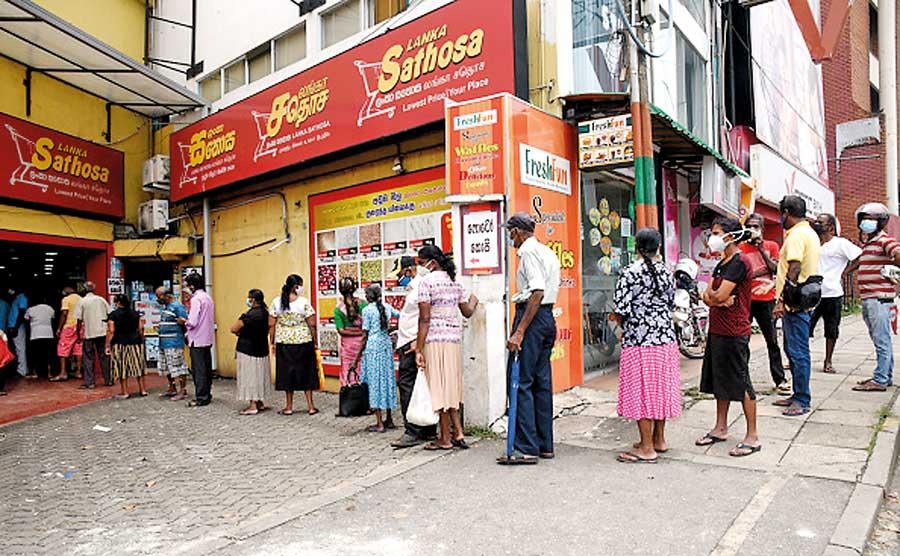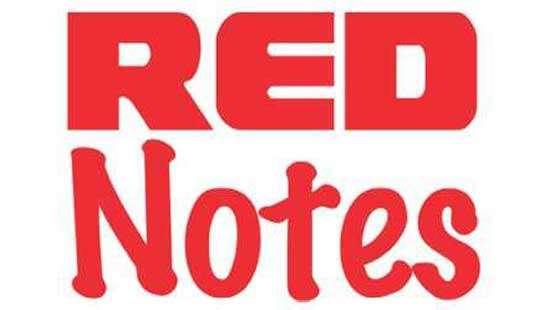22 Nov 2021 - {{hitsCtrl.values.hits}}

People queueing up near a Sathosa outlet to buy daily essentials
Sri Lanka is mired in multiple crises. The country continues to be devastated by the pandemic, crippled by balance of payment problems that are only the surface of a long economic depression, and rising cost of living contributing to food insecurity.
of payment problems that are only the surface of a long economic depression, and rising cost of living contributing to food insecurity.
Significantly, the Minister of Finance in his Budget Speech recognises the severity of the economic situation: “We are living through the history’s most challenging period in terms of people’s lives, livelihoods, sources of income, and job security.” Furthermore, he identifies the systemic character of this crisis and the structural problems of the economy reaching back over the decades. While the diagnosis of the macroeconomic crisis is for the most part correct, the priorities are wrong and the solutions are flawed.
During these times of great social and economic suffering, the citizenry should be vigilant. Where the budget has failed to correct course of the sinking Sri Lankan economy, it is public protests that can ensure we don’t completely drown with the most severe crisis affecting the country over the last century.
Diagnosis of problems
This is how the Budget Speech sets out the economic problems in Sri Lanka, from the global character of the crisis to the everyday challenges facing people. It states: “Disruption to food production chains, climate change, natural catastrophes, energy crises, and fluctuations in international commodity prices over which we have no control, have become common. These cannot be solved only through domestic measures. These require collaborations internationally.”
 Then it goes onto accept the Government’s inability to address the much-talked about rising cost of living as follows: “We have to accept that the increase in prices is due to a shortage of goods, the imposition of import restrictions, the overreliance on imports, the depreciation of the rupee together with the failure to adequately encourage manufacturers. Given the aforementioned, it must be understood that the solutions available to control the behaviour of the goods and services market are both medium to long term.” Next, the structural problems of the economy are identified as relating to a tilt towards the trading sector: “For a long time now, imports have been double of exports. This is not sustainable and it is challenging.”
Then it goes onto accept the Government’s inability to address the much-talked about rising cost of living as follows: “We have to accept that the increase in prices is due to a shortage of goods, the imposition of import restrictions, the overreliance on imports, the depreciation of the rupee together with the failure to adequately encourage manufacturers. Given the aforementioned, it must be understood that the solutions available to control the behaviour of the goods and services market are both medium to long term.” Next, the structural problems of the economy are identified as relating to a tilt towards the trading sector: “For a long time now, imports have been double of exports. This is not sustainable and it is challenging.”
So we have it finally from the horse’s mouth after two years wasted in denial with the horse shit about prosperity and splendour! That is valuable time lost to provide relief to the people. And sadly, even as the Government recognises the situation for what it is after being ridiculed in public and challenged by powerful protests, it lacks the vision and the political will to even chart a credible path out of this crisis.
Revenues and investment
Government revenues over the last decade have been relatively low on the order of 12% to 14% of GDP. Furthermore, since the tax cuts soon after President Gotabaya Rajapaksa came to power, revenues in 2020 and 2021 are abysmally low and on the order of 9% of GDP. For a country that should eventually target revenues above 25% of GDP, the budget measures to raise revenues to even 12.3% of GDP next year are unconvincing. This begs the question whether the proposed budget proposals will be implemented. Measures such as wealth taxes targeting the stock of wealth, rather than income taxes difficult to raise with falling income, are needed during a time of crisis. But the Government beholden to the wealthier classes lacks interest and the political will for such redistribution.
Much of the Government spending is focused on infrastructure build-out and populist measures of hand outs to rural constituencies. Neither are going to get the country out of the crisis. A country like Sri Lanka cannot stimulate itself out of the economic crisis through infrastructure spending. And there are no measures to mobilise the rural economy with appropriate investment and programmes.
"Sadly, even as the Government recognises the situation for what it is after being ridiculed in public and challenged by powerful protests, it lacks the vision and the political will to even chart a credible path out of this crisis"
Budgets set the direction for the economy mainly through capital expenditure; where recurrent expenditure mainly goes for maintaining state services through salaries and social welfare. The Budget Estimates and Proposals show that highways and roads receive the largest development allocations amounting to Rs. 270 billion, which is 29% of the total allocated public investment of Rs. 931 billion. The question asked by working people in these dire times is, can we eat roads?
Compare this with the crucial sectors of fisheries – the major source of animal protein for our people – and livestock – important for milk production – have only been allocated Rs. 1 billion each. In recent years, imports of seafood have been Rs. 40 billion (US$ 200 million) and of milk powder Rs. 60 billion (US$ 300 million); which is foreign exchange the country cannot afford today, leading to shortages and price hikes. While the Budget Speech mentions import substitution in many places, these meagre allocations betray the Government’s disregard for food security and meaningful solutions of self-sufficiency.
The other major set of proposals in the Budget are for populist measures such as allocations for the village level GS and electoral divisions claiming to allow for local level development. The reality seems more akin to an election budget with hand outs, particularly at a time when provincial elections are on the cards.
Protests and resistance
One of the few meaningful allocations in the Budget is the Rs. 30 billion to address the school teachers’ salary anomalies. While that amount is not enough, it is a first step thanks to the strikes and protests sustained over months by the teachers. It is also a valuable lesson that unless there are continued protests by the public the Government cannot be held in check.
As the crises deepen, and the public and even the bureaucracy resists the Government’s policies, the President may rely even more on the military further damaging public institutions. With the deteriorating situation of state coffers, the Government may run to the IMF and even consider privatising public services including education and healthcare, as hinted at the end of the Budget Speech claiming we have an “obsession with ownership”. Indeed, we should eschew such an obsession with ownership, but not of public ownership, rather private ownership and property. During these times of multiple crises it is protests and demands for redistribution that may ensure even survival including the very basics of life such as food.
28 Nov 2024 16 minute ago
28 Nov 2024 36 minute ago
28 Nov 2024 2 hours ago
28 Nov 2024 3 hours ago
28 Nov 2024 4 hours ago